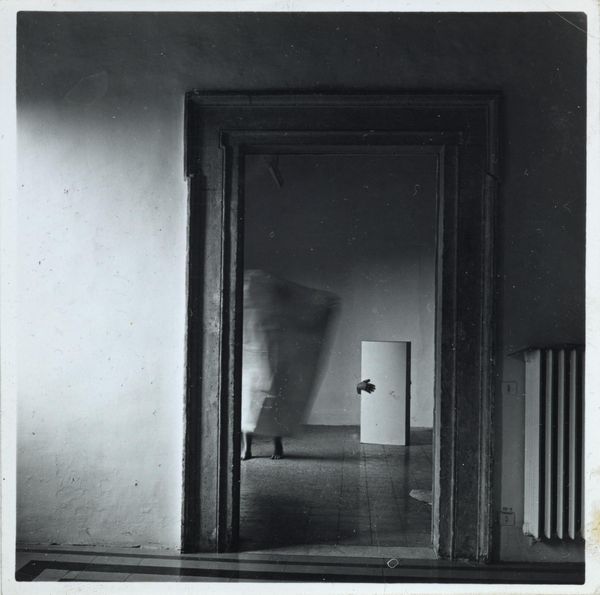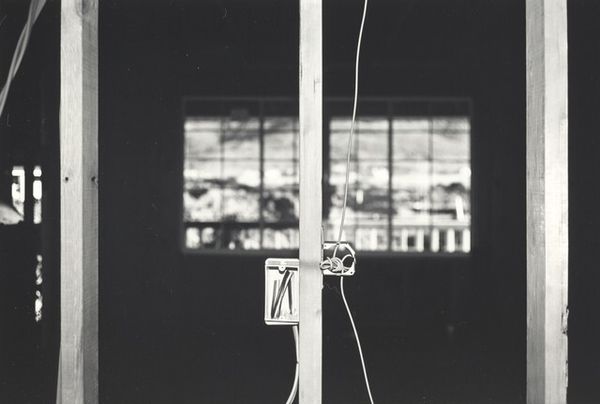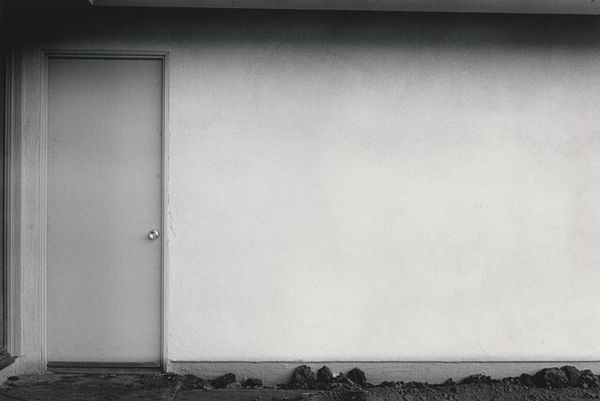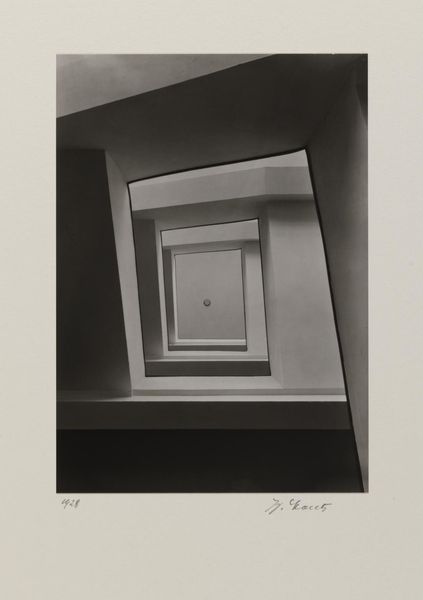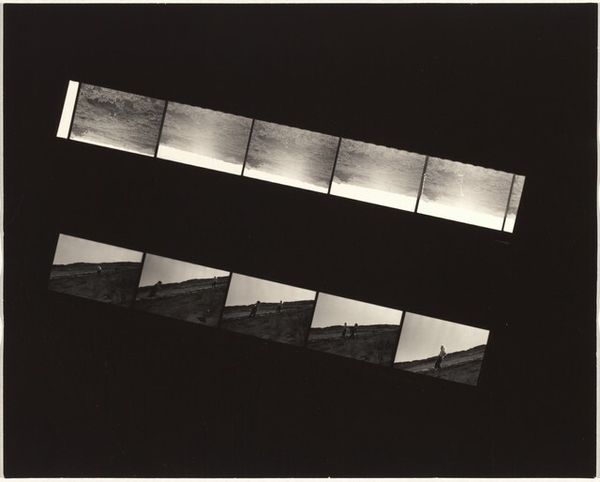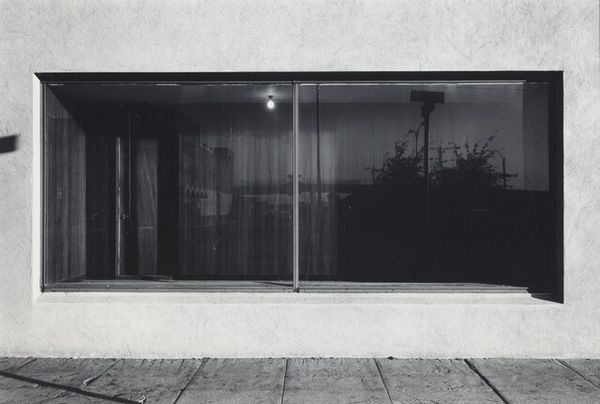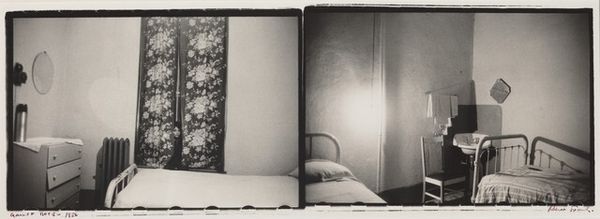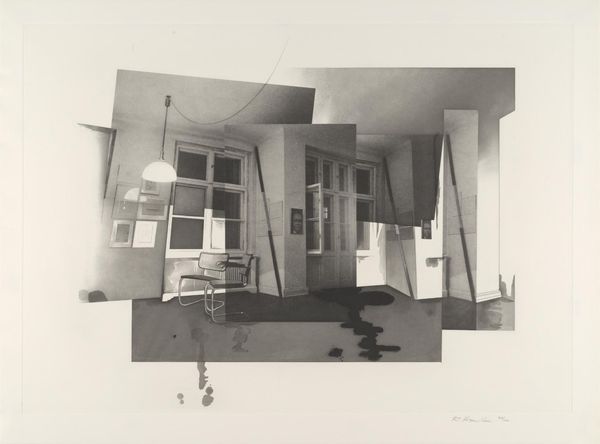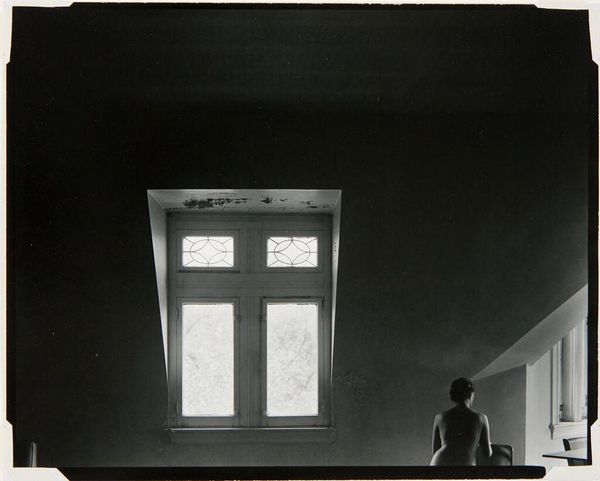
photography
#
still-life-photography
#
black and white photography
#
photography
#
monochrome photography
#
abstraction
#
monochrome
#
modernism
#
monochrome
Dimensions: image: 9.6 x 7.2 cm (3 3/4 x 2 13/16 in.) sheet: 25.2 x 20 cm (9 15/16 x 7 7/8 in.)
Copyright: National Gallery of Art: CC0 1.0
Editor: This photograph, "Georgia O'Keeffe Painting with Light Bulb," was taken around 1936 by Dorothy Norman. It's struck me how simple it is, yet the contrast between the light and shadow creates a really dramatic, almost unsettling mood. What do you see in this piece? Curator: The photograph offers an almost uncanny domestic scene. We see this dangling lightbulb—an icon of modernity and enlightenment, yet it seems inert. Consider the visual language at play. The geometric painting, barely visible, seems to echo forms and shapes in O'Keeffe’s artwork, imbuing the piece with symbolic weight as a personal, even internalized reflection of the artist through her belongings and surroundings. What message is being conveyed? Editor: It's like a hidden self-portrait, but instead of seeing O'Keeffe, we see what she sees or maybe how she feels through those sharp contrasting light forms. Curator: Exactly. Notice how the light, our symbol for understanding, casts a harsh, unwavering shadow. Light's typical promise seems negated; we confront darkness, a form, seemingly devoid of warmth or invitation. Does this harsh contrast, this opposition between the expected illumination and stark shadow suggest something deeper to you? Editor: Maybe it is exploring how even enlightenment, or art, has a shadow side? Curator: Indeed. What starts as simple and objective becomes pregnant with potential for diverse narratives. And what began as merely an iconic subject, or an observed item in passing—something above us which, quite literally, casts a revealing or obscuring gaze downward upon everything in its jurisdiction, illuminating meaning—becomes a reflection of our own internal tensions and interpretations. Editor: That’s a completely different perspective from what I initially considered! Thanks!
Comments
No comments
Be the first to comment and join the conversation on the ultimate creative platform.
